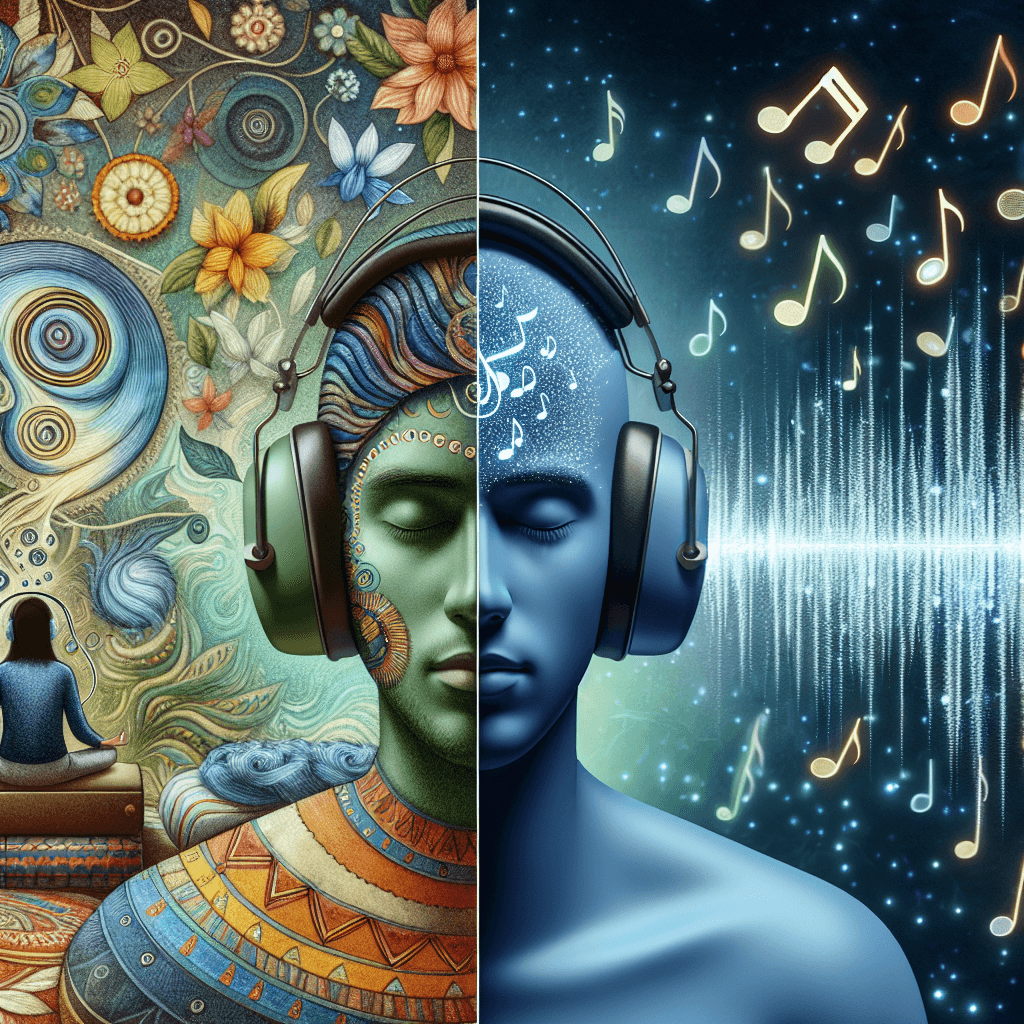How do noise-canceling headphones use sound to create silence
It seems counterintuitive, but your headphones create that peaceful quiet by adding *more* sound—generating a precise "anti-noise" wave that literally erases the world around you.


Too Long; Didn't Read
TLDR: Noise-canceling headphones use microphones to listen to outside noise and then produce an opposite sound wave. This new wave cancels out the original sound before it reaches your ear, creating silence.
The Sound of Silence: How Do Noise-Canceling Headphones Use Sound to Create Silence?
Have you ever been on a noisy flight or a bustling train, slipped on a pair of noise-canceling headphones, and felt the world's low-frequency drone simply melt away? It feels like magic, a personal mute button for the chaos around you. But this pocket of peace isn't created by magic; it's a brilliant application of physics. Instead of just blocking sound, these remarkable devices actively create more sound to give you silence. This post will demystify this fascinating process, breaking down the science of how Active Noise Cancellation (ANC) technology literally fights sound with sound to engineer your personal quiet zone.
The Two Types of Quiet: Passive vs. Active Noise Cancellation
Before diving into the complex science, it's important to distinguish between two ways headphones create quiet.
- Passive Noise Cancellation: This is the most basic form of sound reduction. It relies on the physical design of the headphones—the thick padding, the tight seal around your ears, and the dense materials—to physically block sound waves from reaching your eardrum. It’s like putting your hands over your ears. It works, especially for higher-pitched sounds, but it’s not the "magic" we’re talking about.
- Active Noise Cancellation (ANC): This is where the real ingenuity lies. ANC is an electronic system that actively listens to and neutralizes outside noise. It’s the reason the persistent hum of an airplane engine can vanish, while the sound of your music remains crystal clear.
The Physics of Destructive Interference
To understand how ANC works, you first need to understand that sound travels in waves, much like ripples in a pond. Each sound wave has a series of peaks (where the air pressure is highest) and troughs (where it is lowest).
The core principle behind ANC is a phenomenon called destructive interference. Imagine you have a ripple in a pond. If you could create another ripple that was a perfect mirror image of the first one—with a trough everywhere the original has a peak, and a peak everywhere it has a trough—and send it to meet the original, what would happen? They would flatten each other out, leaving the water still.
Sound waves work the same way. By generating a sound wave that is the exact inverse of an unwanted noise, ANC headphones cause the two waves to cancel each other out before they ever reach your ear.
How ANC Works: A Step-by-Step Breakdown
The process of creating this "anti-noise" happens in a fraction of a second, following a precise, four-step process.
- Capture: Tiny microphones built into the outside of the headphone earcups constantly listen to the ambient noise around you. They pick up the sound waves of things like an engine's drone or the hum of an air conditioner.
- Analyze & Invert: The captured sound is sent to a sophisticated digital signal processing (DSP) chip inside the headphones. This chip instantly analyzes the sound wave and generates a new, identical wave that is perfectly out of phase with the original. This means the new wave is an exact mirror image, or "anti-noise."
- Broadcast: The speakers inside your headphones then play this newly created anti-noise wave directly into your ears, timed perfectly to coincide with the original ambient noise.
- Cancel: At your eardrum, the incoming sound wave from the outside world meets the anti-noise wave produced by your headphones. Through the power of destructive interference, they neutralize each other, and the unwanted sound is effectively erased.
Why It’s Not a "Magic Mute Button"
While incredibly effective, you may have noticed that ANC technology has its limitations. It works best on constant, low-frequency sounds. This is because these sounds have a predictable, repeating wave pattern, making it easy for the DSP chip to analyze and create an accurate anti-noise signal.
This is why headphones are so good at canceling out:
- Airplane engine hums
- Train and bus rumbles
- Air conditioning units
- Fan noise
However, they are less effective against sudden, irregular, high-frequency sounds like a dog barking, a baby crying, or a nearby conversation. These sounds are too complex and change too quickly for the system to create a perfect anti-noise wave in real time. For these sounds, the passive noise-canceling properties of your headphones do most of the heavy lifting.
Conclusion
The silence delivered by your noise-canceling headphones is anything but empty. It is, in fact, filled with a meticulously crafted sound wave designed to give you peace. By capturing external noise, creating an exact "anti-noise" replica, and playing it back to create destructive interference, this technology transforms a fundamental principle of physics into a practical tool for modern life. So, the next time you switch on your headphones and the world fades away, you’ll know it’s not magic—it's just a brilliant symphony of sound, expertly conducted to create silence.
More Articles

Why do movie punches sound so much crunchier and louder than real ones?
That sickening, bone-crunching punch you hear in the movies is a lie, and the secret ingredient is probably sitting in your refrigerator right now.

What makes a beer bottle suddenly foam over just from a light tap on top?
It’s not magic, it’s a shockwave; discover the explosive physics that turns a gentle tap on your beer bottle into an instant foamy geyser.

Why do police officers touch the back of a car during a traffic stop?
It’s not a random habit; that simple touch is a calculated, old-school tactic designed to leave a crucial and potentially life-saving piece of evidence behind.